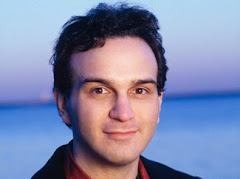It was very good to welcome maestro Vladimir Ashkenazy back to the MPO with a delightful and colourful Russian programme on 1 October 2016. The concert opened with Rimsky-Korsakov’s Russian Easter Festival Overture, a rich and lively work despite its roots in orthodox plainchant. Written just after the Capriccio espagnol and Scheherezade, it shares the fabulous colourful orchestration that makes those works favourites in the concert hall. It served as a great calling card for the MPO; the strings producing a clear sound and the brass relishing every moment in the spotlight.
Ashkenazy’s pacing in the overture was slightly sluggish and the various sections did not gel together as well as they should. Special mention should go to the MPO leader Peter Danis, principal cellist Csaba Koros and flutist Hristo Dobrinov who were absolutely extraordinary in their ravishing solos.
For Tchaikovsky's Variations on a Rococo Theme, Ashkenazy used a reduced-size orchestra, which lent a chamber-music feeling to this charming work, with its consciously mid-18th century theme. The variations never stray far from the tune, even when the soloist plays intricate filigree of the utmost virtuosity.
Li-Wei Qin and Ashkenazy proved excellent collaborators. They seemed in sync with each other's musical ideas. Variation III, with its long legato lines, and the mournful Variation VI were especially effective. Variation V, with its mini-cadenzas, showed Li-Wei Qin’s technical prowess with unswerving sweetness of tone and security of intonation. The perpetual motion of the final variation and coda earned the performers a long and well-deserved ovation. Li-Wei Qin's deliciously played encore of Piatigorsky's arrangement of Prokofiev's March Op 65 for solo cello from "Music for children" was in keeping with a lovely Russian night out.
The Shostakovitch 8th Symphony contrasts starkly with the famous 7th in that it is much darker and oppressive. In fact, there are many parallels between the 8th and the popular 5th Symphony, in that they share certain features, such as structure, melodic development, and execution. The major difference is that the 8th is very much larger in scale, a huge behemoth that reflects the long weariness of the participants in the war.
Ashkenazy was in full control of the orchestra, although there were a few raggedy moments at some sections. Speeds were a touch slower than those performed under the baton of Yevgeny Mravinsky, the original dedicatee of the symphony - particularly in the first two movements. However, by the third piston-like rumble of the third movement, they had got into the full swing, giving an interpretation that was suitably acerbic.
The flute/piccolo was a touch wobbly and unsure at certain points of the second movement, as were the trumpets and the horns. Meanwhile, the lower strings and violas were precise, whereas the main body of strings struggled slightly to come to grips with the work in the first movement. However, Ashkenazy's magnetism and intellectual explanations did seem to have a positive effect on the playing. By the end, all the musicians were as physically and emotionally exhausted as the audience, which bodes well as an interpretation for such a stark and gloomy piece.
Subscribe to:
Post Comments (Atom)


















































No comments:
Post a Comment